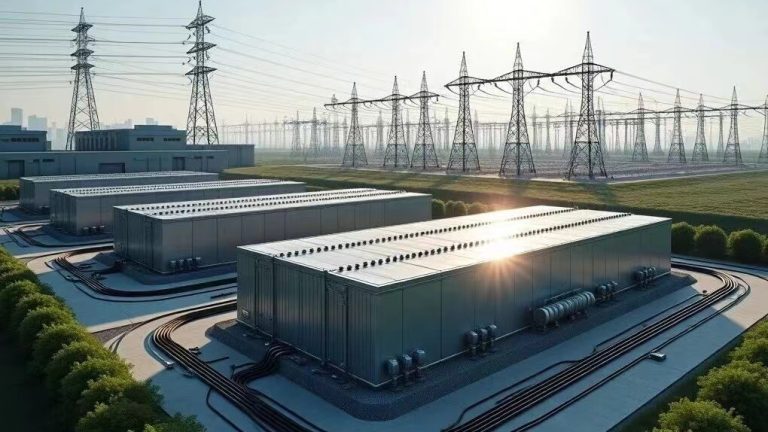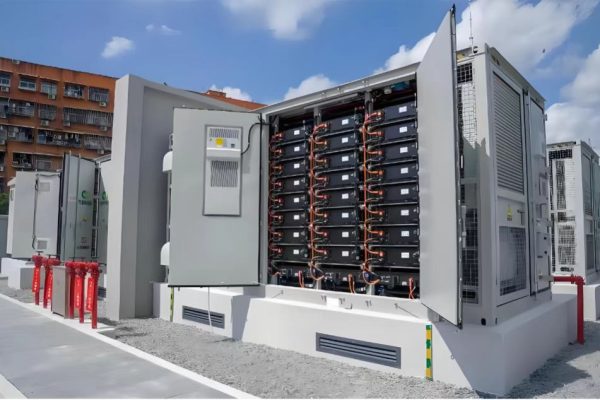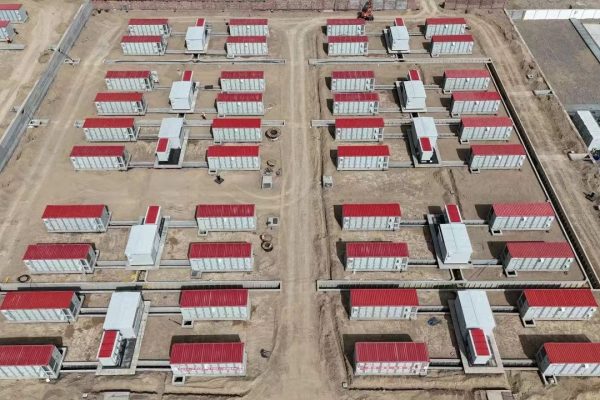In the fast-evolving world of commercial and industrial (C&I) energy storage, one of the most important design choices engineers face is whether to adopt an AC-coupled or DC-coupled system architecture.
Both configurations can integrate solar PV, battery storage, and grid connection, but they differ significantly in efficiency, cost, control strategy, and retrofitting flexibility.
Understanding these differences helps system designers, EPCs, and buyers choose the right architecture for their application — whether it’s peak shaving, demand response, or PV self-consumption.
1. The Basics: What Do “AC-Coupled” and “DC-Coupled” Mean?
In hybrid PV + ESS systems, both the solar array and battery storage generate or store DC power.
How this power is converted and connected determines whether your system is AC-coupled or DC-coupled.
| Type | Key Connection Point | Typical Layout |
|---|---|---|
| AC-Coupled | PV and battery each have their own inverter, connected on the AC bus | PV inverter + Battery inverter |
| DC-Coupled | PV and battery share a common DC bus before one hybrid inverter | Single hybrid inverter |
🧩 AC-Coupled System Overview
In an AC-coupled system, the PV array connects to a solar inverter, which converts DC → AC and feeds it into the AC bus.
The battery connects through a separate bidirectional inverter, converting AC → DC during charging and DC → AC during discharging.
Each inverter operates independently but is coordinated through an energy management system (EMS).
Pros:
- Ideal for retrofit projects with existing PV systems
- Easier modular expansion (add more batteries later)
- Independent operation for PV and battery
Cons:
- Two conversion steps (DC–AC–DC) reduce efficiency
- Higher component count and wiring complexity
⚡ DC-Coupled System Overview
In a DC-coupled system, the PV and battery are both connected to a common DC bus.
A single hybrid inverter manages both sources and performs DC → AC conversion once for grid or load supply.
Pros:
- Higher overall round-trip efficiency
- Lower wiring loss and fewer inverters
- Simplified control logic
Cons:
- Harder to retrofit to existing AC PV systems
- Requires hybrid inverter with matched BMS protocol
- Less flexible for scaling different PV/battery ratios
2. Key Difference #1: System Efficiency
Efficiency is often the top reason for choosing DC-coupled architecture.
| Process | AC-Coupled | DC-Coupled |
|---|---|---|
| Solar → Battery | DC → AC → DC (two conversions) | DC → DC (one conversion) |
| Battery → Load | DC → AC | DC → AC |
| Overall Round-Trip Efficiency | 85–90% | 92–96% |
⚙️ Verdict:
DC-coupled systems are typically 5–10% more efficient because of fewer conversion stages.
This efficiency difference becomes significant for large daily cycling systems, such as factory peak shaving or self-consumption optimization.
3. Key Difference #2: Installation and Retrofitting
AC-Coupled
- Best suited for adding batteries to existing solar systems
- Minimal interference with original PV inverter setup
- Easier integration with microgrids or diesel gensets
Example:
A factory already running a 500 kWp solar array can simply add a 250 kW battery inverter and a 500 kWh battery bank without touching the PV side.
DC-Coupled
- Better for new installations where both PV and ESS are designed together
- Fewer components and simplified wiring
- Requires compatible hybrid inverter and BMS
🏗️ Verdict:
AC-coupled = retrofit-friendly
DC-coupled = best for new, optimized projects
4. Key Difference #3: Cost and Component Count
AC-Coupled
- Two separate inverters
- Additional AC cabling, switchgear, and control logic
- Slightly higher CAPEX (~10–15%)
DC-Coupled
- One hybrid inverter, fewer conversion stages
- Lower installation time and component cost
| Cost Aspect | AC-Coupled | DC-Coupled |
|---|---|---|
| Inverter Count | 2 | 1 |
| Wiring | More AC cabling | Fewer connections |
| EMS/Controller | Often required | Built-in in hybrid inverter |
| O&M Complexity | Higher | Lower |
| CAPEX | ~10–15% higher | Lower (for same power rating) |
💰 Verdict:
DC-coupled systems are more cost-efficient for new projects, while AC-coupled setups save cost in retrofits.
5. Key Difference #4: Energy Management and Control
AC-Coupled
- PV inverter and battery inverter operate independently.
- EMS coordinates charging/discharging schedules.
- Easier to integrate third-party software for demand response or virtual power plant (VPP) control.
DC-Coupled
- Centralized control through hybrid inverter firmware.
- Fast, coordinated charging and discharging.
- Limited flexibility if the inverter brand doesn’t support open protocols.
🧠 Verdict:
Choose AC-coupled for advanced grid interaction or flexible control.
Choose DC-coupled for simpler energy flow and higher efficiency.
6. Key Difference #5: Safety and Standards
Both systems must comply with international ESS safety standards like:
- UL 9540 / UL 1973 (battery systems)
- IEC 62109 / IEC 62477 (inverters)
- IEC 62933 (grid-connected energy storage)
AC-Coupled
- Isolated subsystems reduce DC fault propagation risk.
- Easier to isolate PV and battery faults separately.
DC-Coupled
- Requires more careful DC bus protection, including:
- DC fuses and contactors
- Reverse current blocking
- Ground-fault monitoring
⚠️ Verdict:
DC-coupled systems need more precise protection design, especially at higher voltages.
7. Real-World Application Scenarios
| Application | Recommended Type | Reason |
|---|---|---|
| Retrofit PV with new battery | AC-Coupled | Plug-and-play addition |
| New C&I PV+ESS project | DC-Coupled | Higher efficiency, lower cost |
| Microgrid with diesel genset | AC-Coupled | Easy synchronization on AC bus |
| High cycling industrial use | DC-Coupled | Lower conversion loss |
| Multiple battery racks or BMS brands | AC-Coupled | Easier modular control |
8. Case Study Example
A logistics park in Southeast Asia installed a 1 MW / 2 MWh C&I ESS for load shifting.
Initially, the team considered a DC-coupled hybrid system but switched to AC-coupled design after evaluating site constraints:
- Existing 800 kWp rooftop PV system (with string inverters)
- Grid connection already configured for AC export
- Need for easy battery expansion in future
The final setup:
- 2 × 500 kW battery inverters
- 2 MWh LFP battery banks
- Integrated EMS for load control
Result:
- 20% reduction in peak demand charges
- 8% higher total system uptime due to modular redundancy
🏁 Lesson: The “right” design depends on project context, not just efficiency numbers.
9. Decision Matrix: Which System Fits Your Needs?
| Criteria | AC-Coupled | DC-Coupled |
|---|---|---|
| Retrofit of existing PV | ✅ | ❌ |
| New installation | ✅ | ✅ |
| System efficiency | ⚪ | ✅ |
| Cost (new project) | ⚪ | ✅ |
| Scalability | ✅ | ⚪ |
| EMS flexibility | ✅ | ⚪ |
| BMS/inverter integration | ⚪ | ✅ |
| Installation simplicity | ⚪ | ✅ |
| High-voltage safety | ✅ | ⚪ |
✅ = Strong advantage ⚪ = Moderate
📊 Use this matrix to match your project priorities with the right architecture.
There’s no single “best” architecture — only the best fit for your project’s goals.
Choose AC-Coupled if:
- You’re retrofitting an existing PV system
- You need modular scalability
- You plan to integrate gensets or complex grid control
Choose DC-Coupled if:
- You’re building a new system from scratch
- You want maximum efficiency
- You prefer simpler control and lower CAPEX
In the long run, both designs play vital roles in the future of distributed energy storage, especially as hybrid inverters and EMS technology continue to evolve.









